Staff
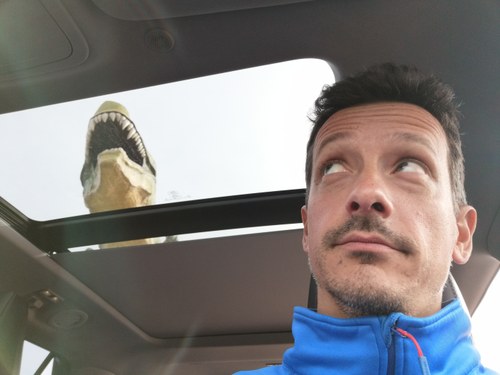
Professor Federico Fanti
Department of Biological, Geological and Environmental Sciences
I am a sedimentary geologist and a vertebrate paleontologist investigating how local or large-scale palaeocological dynamics as documented in sedimentary rocks drive evolutionary patterns in the fossil record via adaptations and extinction events. In other words, who lives, who dies, and most importantly: why? I crossed the globe for the past 20 years to study ancient life through filed-oriented projects in Europe, Canada, U.S.A., Mexico, Mongolia, Turkmenistan, Africa, and Australia. My primary research interests include exploration (yes, it is research!), taphonomy and stratigraphy of areas where vertebrate remains have been, are, or can be discovered.
I am coordinator for the courses of Paleontology, Paleobiology and Vertebrate Paleontology at the BiGeA Department, and proud to be the Scientific Advisor of the Geological Collection "Giovanni Capellini Museum" in Bologna. I am affiliated to the IUGS-Initiative on Forensic Geology Committee as the Forensic Palaeontology Adviser. I am a National Geographic Explorer, working on exploration and science communication.
Personal website
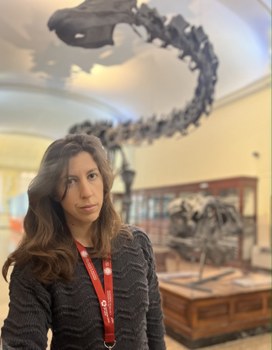
Michela Contessi, Ph.D.
Collezione di Geologia "Museo Giovanni Capellini"
Born in Ravenna, I earned my MSc in Geoscience in 2009 and the Ph.D. in Geological Sciences in 2012. I currently am the conservator of the Geological Collection "Giovanni Capellini Museum" of the Bologna University Museum Network.
As a paleontologist I was involved in diverse field projects in Alaska, Canada, France, Italy and Tunisia, mainly focused on the study of Mesozoic tetrapod fauna. I worked at the British Geological Survey (UK) for the museum holotypes digitization project named BG 3ds fossils online. Even if dinosaurs remain my first love, I'm passionate about science history - and the Bologna Museums offer an invaluable resource.
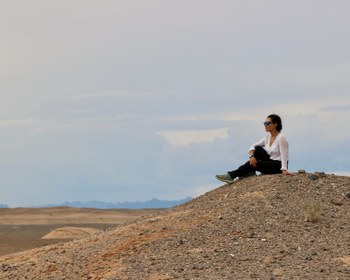
Anna Giamborino
Associazione Paleontologica Paleoartistica Italiana
I'm a geologist, dealing with science education in the geo-palaeontological field and with the planning of educational activities and events aimed at mainstream media.
I collaborate with the exhibition projects Dinosauri in Carne e Ossa and PaleoAquarium – Il Mare al Tempo dei Dinosauri, for which I planned and managed various editions throughout Italy, and I am the creator of the project The Empire of Dinosaurs.
In collaboration with Sapienza University of Rome, I have been part of the research group involved in the excavation project Alierasaurus ronchii and the sardinian Permian faunas since 2014.
In 2022 I took part in the paleontological excavation and geological survey campaign in Canada for the Southern Alberta Dinosaur Project – SADP, in collaboration with the Royal Ontario Museum (ROM) and the Alma Mater Studiorum – University of Bologna, and in the Boreal Alberta Dinosaur project Project (BADP), in collaboration with the Philip J. Currie Dinosaur Museum. In 2023 I was member of the research group of the NEE – Nemegt Educational Expedition project, in Mongolia.
I was responsible for the educational projects In Search of the Spinosaurus with the Genoa Science Festival (2016) and Rediscovering the Dinosaurs – by Jack Horner – for Bergamo Scienza (2018).
In 2017, together with a large group of paleontologists, geologists and artists, I co-founded the Associazione Paleontologica Paleoartistica Italiana (Italian Association of Paleontology and Palaeoart - A.P.P.I.) which, with its science communication activity, guarantees wide prominence to the world of geology, paleontology and paleoart.
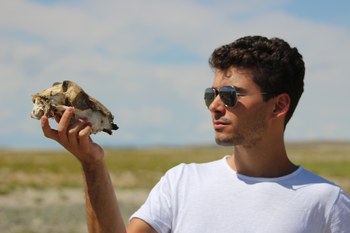
Marco Muscioni, Ph.D. candidate
Department of Biological, Geological and Environmental Sciences
Born in the Republic of San Marino, I was captivated by natural history since the early years of childhood, fueled by fossil hunting on the Apennines and the firsthand interaction with plants and wildlife. I began familiarizing with comparative anatomy thanks to the osteological preparation of roadkills, a skill I refined over time which allowed me to collaborate with private collectors and small institutions. I earned a bachelor’s degree in Natural Sciences and a master's degree in Evolutionary Biology at the University of Bologna, with both final theses focusing on mesozoic archosaurs. During my internships and extra-academical activities I acquired expertise regarding comparative anatomy, morphometry and segmentation of anatomical structures from micro-CT imaging, and I took part in educational paleontological expeditions in Canada and Mongolia.
I’m currently a PhD student at BiGeA, and my research activity focuses on the evolution, anatomy and paleoecology of fossil archosaurs from the Villaggio del Pescatore Lagerstätte.
Personal website
Collaborators and Researchers
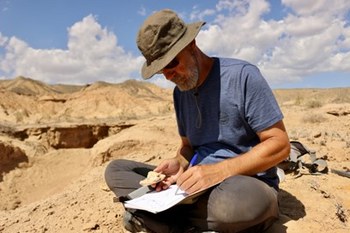
Davide Bonadonna
Scientific illustrator
Illustrator and digital sculptor, winner of prestigious international awards including Lanzendorf PaleoArt Price, I cooperate with paleontologists worldwide for prehistoric models reconstructions and palaeoenvorments. My works are displayed in museums (MUSE Museum of Trento, Sauriermuseum Aathal of Zurich, Zoologisches Museum of Hamburg, Field Museum of Chicago, Smithsonian NMNH of Washington), temporary exhibits and theme parks, as well as being published in scientific and educational, national and international magazines, including National Geographic Magazine and Nature covers.
Personal website
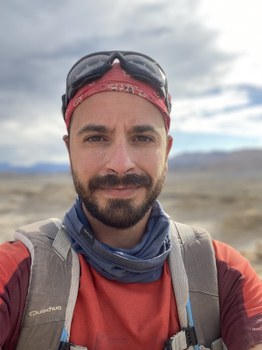
Alfio Alessandro Chiarenza, Ph.D.
University College London
I am Alfio Alessandro Chiarenza, a vertebrate palaeontologist and Royal Society Newton International Fellow at the Department of Earth Sciences, University College London. Previously, I held the position of Juan de la Cierva Postdoctoral Fellow at the MAPAS Lab, Universidade de Vigo. I completed my PhD at Imperial College London in 2019, and subsequently moved to Texas as a postdoc in Arctic Palaeontology at the Perot Museum of Nature and Science in Dallas, USA. In 2021, I joined Dr Sara Varela’s MAPAS lab as an ERC postdoctoral fellow, with a focus on dinosaur palaeobiology, macroecology, and extinction. My research integrates phylogenetic, biogeographic, statistical, and Earth System Modelling tools.
My doctoral research focused on Late Cretaceous dinosaur macroecology and the end-Cretaceous mass extinction. I employed ecological modelling, Big Data compilation, and paleoclimatic simulations to unravel the complex interplay of climate, geography, and biodiversity on dinosaur evolution. I have also worked on Mesozoic reptiles from the Tethyan margin, including dinosaurs and crocodylomorphs.
Always excited about exploring new field areas, my current research combines analytical palaeobiology methods and new fossils to investigate terrestrial tetrapod macroevolution, with a strong focus on dinosaurs, during ancient hyperthermals – global warming events of the ancient past – and their effect on the evolution of species.
Personal website
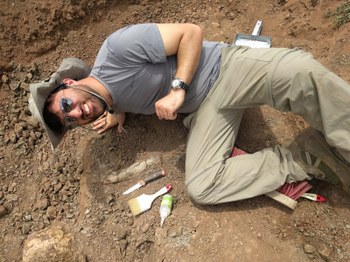
Filippo Maria Rotatori, Ph.D. Candidate
Universade Nova de Lisboa
I have always been passionate about science and the wonders of the natural world, I graduated from the University of Bologna in Natural Sciences and from the New University of Lisbon in Paleontology. Since 2020 I have been a doctoral student in the latter institution, where I carry out my research activities which have as main focus the systematics and macroevolution of Iguanodontian dinosaurs. My main research fields include morphological phylogenetics, virtual palaeontology and anything new I find interesting to learn! Since 2016, I have been collaborating with the Lourinhã Museum by participating in the annual excavation activities, mainly exploring the Upper Jurassic outcrops of the area. Other scientific field expeditions in which I have taken part include the Upper Jurassic of the state of Wyoming (U.S.A.) and the Upper Cretaceous of the Aràgon region (Spain).